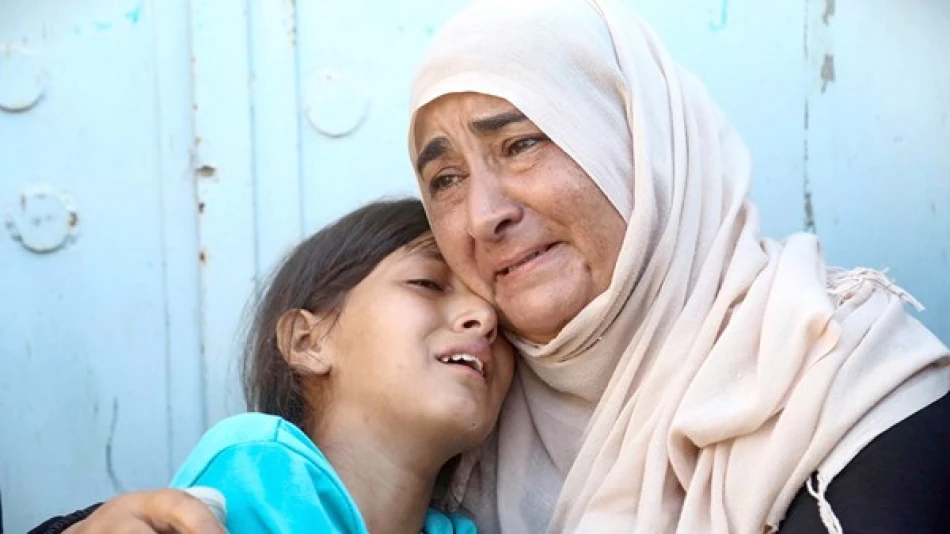
Dozens Affected by Acute Flaccid Paralysis in Gaza: Health Crisis Unfolds
Gaza Health Crisis Deepens as Acute Paralysis Cases Surge Amid Ongoing Blockade
Gaza's healthcare system faces a devastating new challenge as Palestinian health authorities report an unprecedented spike in acute flaccid paralysis cases, with 45 documented instances in just two months. The surge comes as the besieged territory grapples with what officials describe as complete infrastructural collapse, raising urgent questions about the long-term health consequences of prolonged conflict and isolation.
Medical Emergency Without Diagnostic Capacity
The Palestinian Ministry of Health announced the alarming rise in acute flaccid paralysis (AFP) cases during June and July, describing it as an unprecedented increase. However, the ministry faces a critical diagnostic gap—without proper laboratory capabilities, medical professionals cannot determine whether these cases stem from polio or Guillain-Barré syndrome, two distinct conditions requiring different treatment approaches.
Acute flaccid paralysis presents as sudden weakness or paralysis in limbs, often accompanied by reduced muscle strength. While children are typically most vulnerable, the condition can affect respiratory and swallowing muscles, potentially proving fatal without proper medical intervention.
Environmental Catastrophe Fuels Health Crisis
Health officials directly link the surge to Gaza's deteriorating environmental conditions. The territory now faces a perfect storm of public health hazards: contaminated water supplies, collapsed sewage systems, accumulated waste, widespread infectious diseases, malnutrition, and compromised immune systems across the population.
This environmental degradation mirrors patterns seen in other conflict zones, but Gaza's unique geography—essentially a sealed enclave—amplifies the health risks. Unlike previous humanitarian crises where populations could migrate to safer areas, Gaza's 2.4 million residents remain trapped within deteriorating conditions.
Famine Denial Versus Ground Reality
Gaza's Government Media Office delivered a stark rebuttal to claims that famine conditions have improved, insisting the humanitarian crisis continues to worsen. Officials report that hospitals have documented over 115 deaths directly attributed to starvation and malnutrition, challenging international narratives about aid delivery success.
The territory requires a minimum of 500,000 flour sacks weekly to prevent complete humanitarian collapse, according to local authorities. This figure provides concrete metrics for the scale of need—far exceeding current aid flows even during periods of increased delivery.
Border Closure Impact
The complete closure of border crossings for 145 days has created an unprecedented humanitarian bottleneck. Even essential items like infant formula face restrictions, contributing to malnutrition rates that particularly affect children and vulnerable populations.
International Response and Historical Context
The Palestinian Ministry of Health has issued urgent appeals to international organizations and humanitarian groups, calling for immediate intervention to halt what they describe as systematic destruction of Gaza's health infrastructure.
This crisis echoes historical precedents where prolonged sieges created secondary health emergencies. The 1992-1996 siege of Sarajevo, for instance, saw similar spikes in preventable diseases as infrastructure collapsed. However, Gaza's situation presents unique challenges given its population density and limited geographic area.
Long-term Health Implications
The surge in paralysis cases represents more than immediate medical emergencies—it signals potential long-term disability burdens for Gaza's population. Without proper diagnostic and treatment capabilities, even treatable conditions like Guillain-Barré syndrome can result in permanent disability.
The intersection of malnutrition, compromised immunity, and environmental degradation creates conditions ripe for disease outbreaks that could persist long after immediate conflicts end. Public health experts have documented similar patterns in Yemen and Syria, where humanitarian crises evolved into generational health challenges.
The current trajectory suggests Gaza faces not just immediate humanitarian catastrophe, but a potential public health crisis that could affect the territory's population for decades to come.
 Layla Al Mansoori
Layla Al Mansoori







